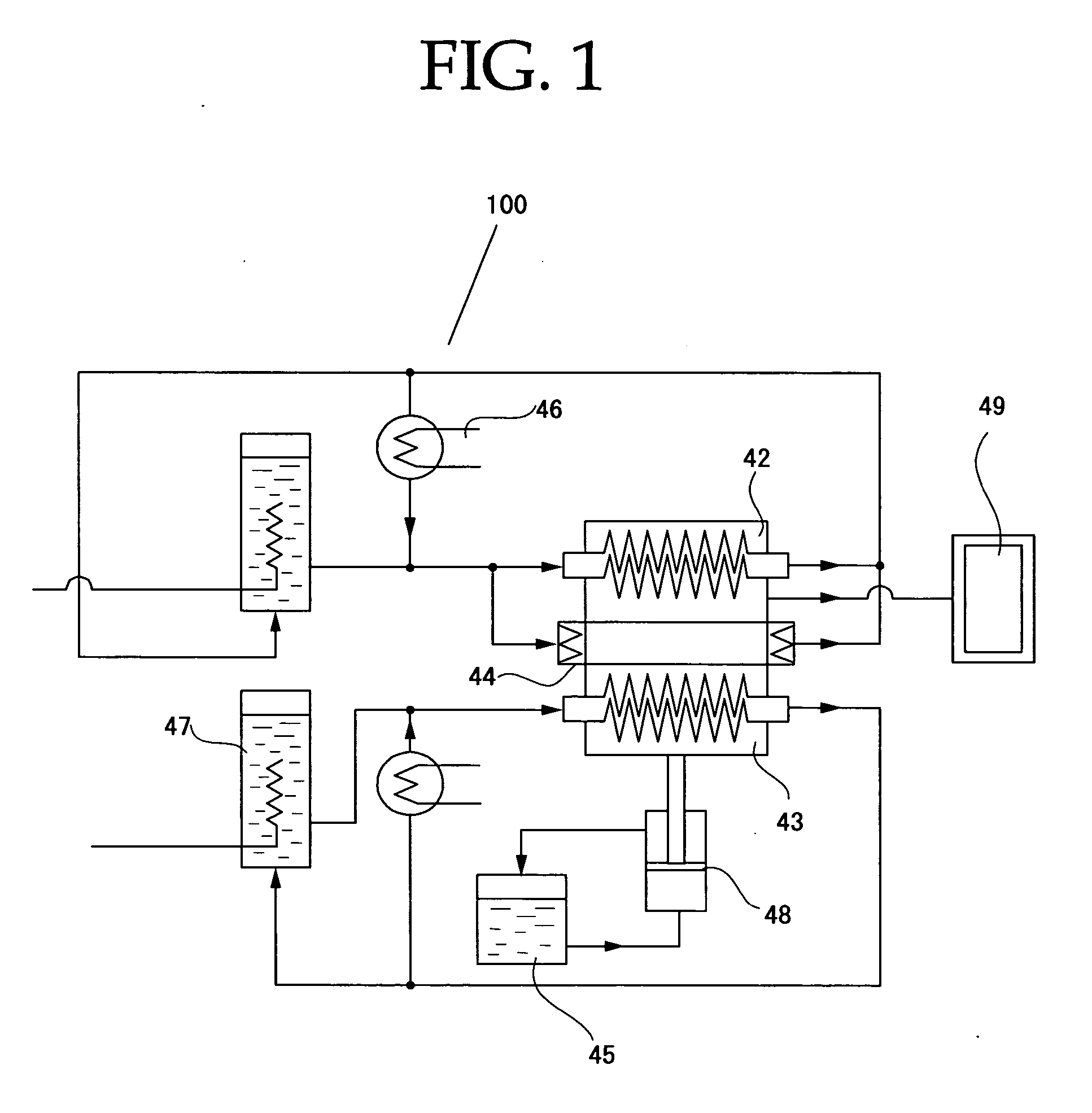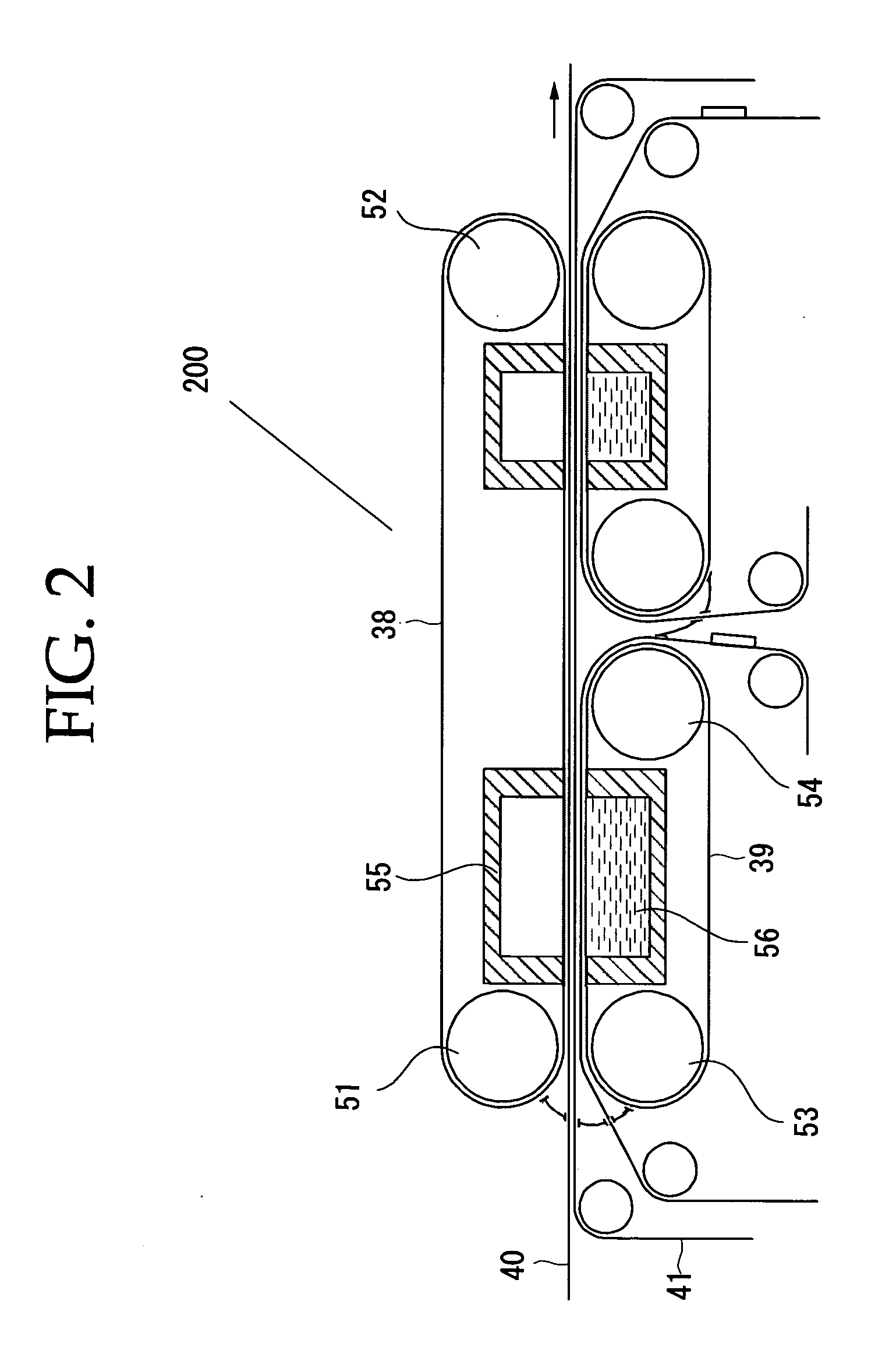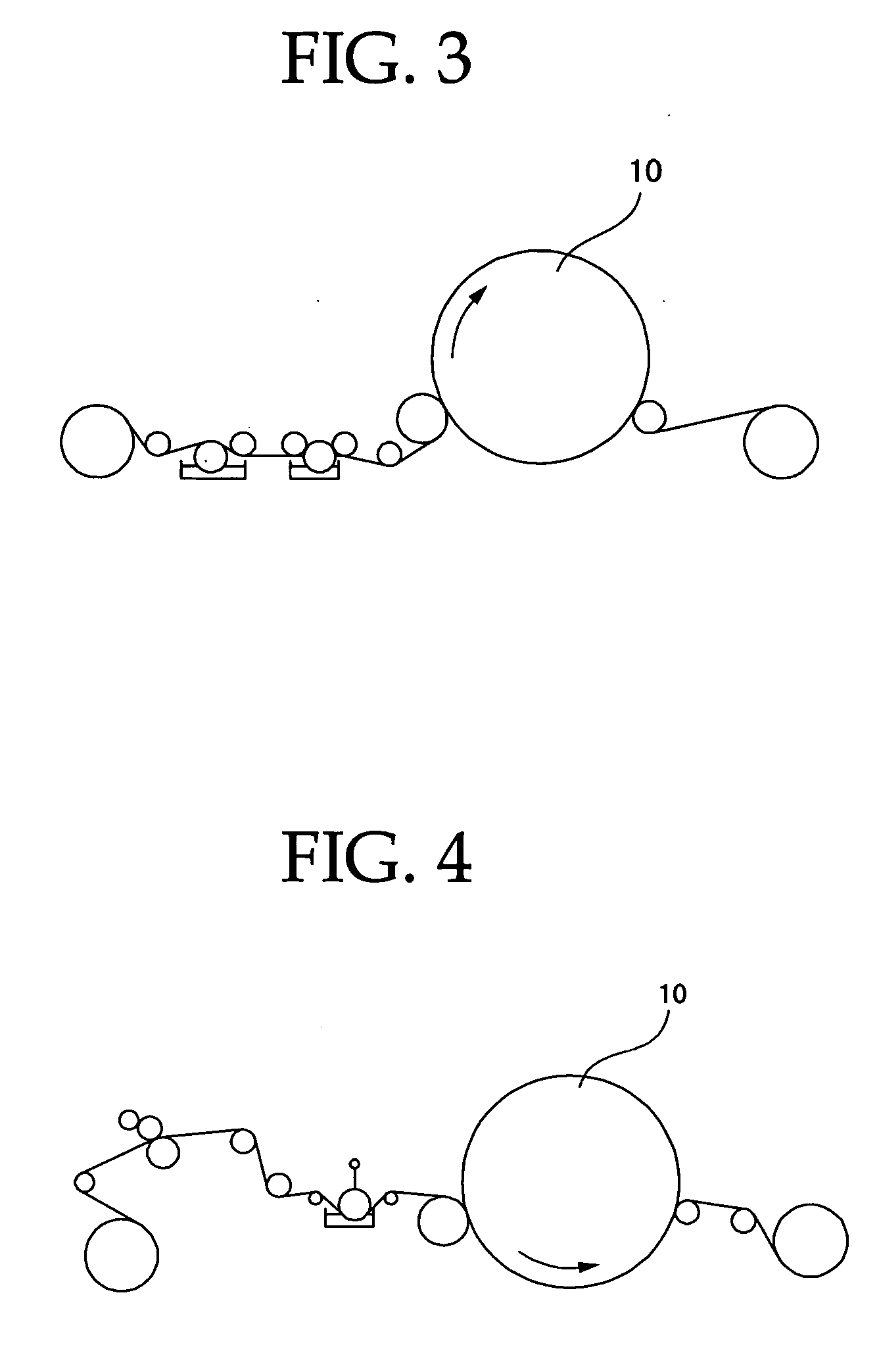Paper, image-recording material support, and image-recording material
a technology of image recording and support, applied in the field of paper, can solve the problems of deteriorating planarity, insufficient resolution of proposals disclosed in the above publications, and inability to form an image high-quality and high gloss
- Summary
- Abstract
- Description
- Claims
- Application Information
AI Technical Summary
Benefits of technology
Problems solved by technology
Method used
Image
Examples
examples
Hereafter, the present invention will be described by means of examples, but it will be understood that the invention is not construed as being limited thereto.
example a-1
Preparation of Image-Recording Material Support
Broad-leaf (hardwood) tree bleached kraft pulρ (LBKP) was beaten to a Canadian Standard Freeness (C. S. F.) of 280 ml using a disk refiner, to thereby prepare a pulp paper material having fiber length of 0.60 mm.
To this pulp paper material, the following additives were added based on the pulp mass: cation starch 1.6% by mass, alkyl ketene dimer (AKD) 0.4% by mass, anion polyacrylamide 0.3% by mass, epoxidized fatty acid amide (EFA) 0.2% by mass, and polyamide polyamine epichlorohydrine 0.2% by mass. An alkyl part of the above alkyl ketene dimer originates from a fatty acid having a main component of behenic acid. A fatty acid part of the epoxidized fatty acid amide originates from a fatty acid having a main component of behenic acid.
Thereafter, the pulp paper material was treated with a manual paper-making machine to make wet paper having an absolute dry weight of 140 g / m2 and water content of 68%.
Both sides of the wet paper th...
example b-1
Preparation of Image-Recording Material Support
Broad-leaf (hardwood) tree bleached kraft pulρ (LBKP) was beaten to a Canadian Standard Freeness (C. S. F.) of 300 ml using a disk refiner, to thereby prepare a pulp paper material having fiber length of 0.60 mm.
To this pulp paper material, the following additives were added based on the pulp mass: cation starch 1.2% by mass, alkyl ketene dimer (AKD) 0.5% by mass, anion polyacrylamide 0.2% by mass, epoxidized fatty acid amide (EFA) 0.2% by mass, and polyamide polyamine epichlorohydrine 0.3% by mass. An alkyl part of the above alkyl ketene dimer originates from a fatty acid having a main component of behenic acid. A fatty acid part of the epoxidized fatty acid amide originates from a fatty acid having a main component of behenic acid.
Thereafter, the pulp paper material was treated with a manual paper-making machine to make wet paper having an absolute dry weight of 160 g / m2 and water content of 68%.
Both sides of the wet paper we...
PUM
| Property | Measurement | Unit |
|---|---|---|
| Temperature | aaaaa | aaaaa |
| Temperature | aaaaa | aaaaa |
| Length | aaaaa | aaaaa |
Abstract
Description
Claims
Application Information
 Login to View More
Login to View More - R&D
- Intellectual Property
- Life Sciences
- Materials
- Tech Scout
- Unparalleled Data Quality
- Higher Quality Content
- 60% Fewer Hallucinations
Browse by: Latest US Patents, China's latest patents, Technical Efficacy Thesaurus, Application Domain, Technology Topic, Popular Technical Reports.
© 2025 PatSnap. All rights reserved.Legal|Privacy policy|Modern Slavery Act Transparency Statement|Sitemap|About US| Contact US: help@patsnap.com



